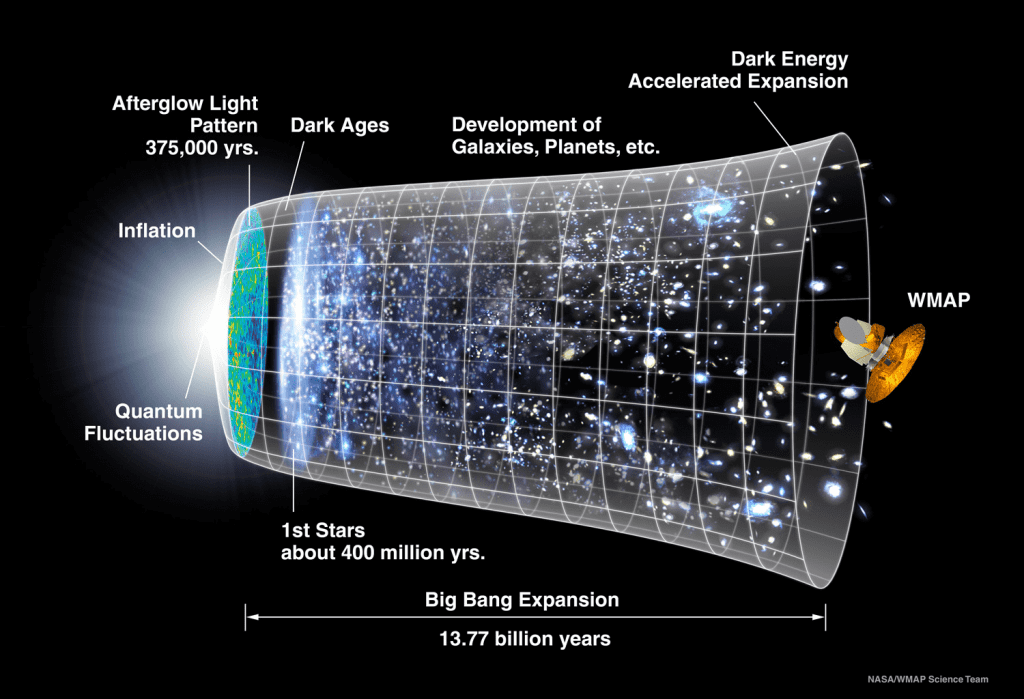CLASS was motivated by several big questions about how the universe began, questions which brought our project to where it is today.
How did the universe evolve?
In the popular imagination, the Big Bang Theory describes an event at the beginning of the universe (sometimes literally imagined as the “bang” of an explosion) from which the universe is born. In physics, the Big Bang Theory describes not the beginning of the universe (much less a “bang”) but rather the evolution of the universe.
During the first half of the 20th century, Edwin Hubble and other scientists demonstrated that the universe is expanding. In its basic essence, the Big Bang Theory is the theory of the expanding universe.
What does “the expanding universe” imply?
According to the Big Bang Theory, a given volume in the universe is literally growing in size. The distances between objects in the universe that are not bound to each other grow with time. Correspondingly, the matter (e.g., atoms), light and other “stuff” inside that volume are becoming less dense with time. Therefore, we can infer that the density of the universe was higher in the past. The heat in the universe also grows more diffuse with time causing an ever decreasing temperature.
What is the Cosmic Microwave Background (CMB) radiation?
Long ago, the universe was very hot — so hot that it glowed with high energy radiation. After much expansion, this glow is measured today as microwaves called the Cosmic Microwave Background (CMB) and its existence was a prediction of the Big Bang Theory.
Thus the announcement of the discovery of the CMB in 1965 was a pivotal triumph of the Big Bang Theory. The Wilkinson Microwave Anisotropy Probe (WMAP) satellite measured the age of the universe to be 13.77 billion years. The CMB originated just 375,000 years after the beginning.
What actually happened at the “beginning” of the universe?
We still don’t know the answer to this, but an idea called “Inflation” may answer this question. The Big Bang Theory successfully describes the evolution and cooling of the universe over billions of years. Within the Big Bang evolution framework, tiny initial “primordial” density fluctuations grew under gravity to become the structure of the universe (e.g., galaxies and their stars) we see today. But the Big Bang Theory does not explain the origin of these primordial fluctuations — it does not explain the true beginning. Inflation theory completes the picture by describing how the initial state of the universe was established by a rapid expansion at the very beginning, stretching random submicroscopic quantum fluctuations into primordial density fluctuations — the seeds of cosmic structure. Quoting physicist Brian Greene, “Galaxies are nothing but quantum mechanics writ large across the sky.”
The figure below, taken from the WMAP website, illustrates this history of the expanding universe:

Discover how these questions translated into the specific goals of the CLASS project today…
